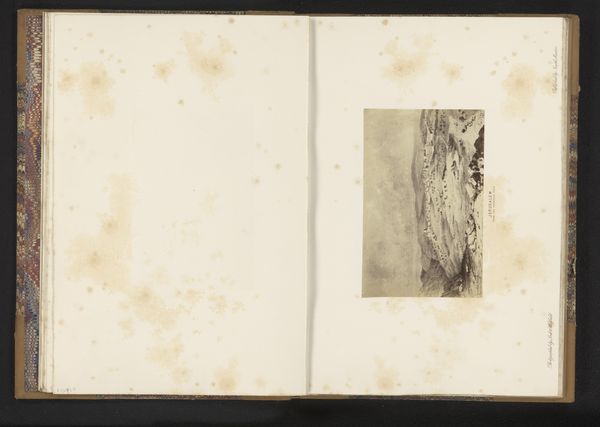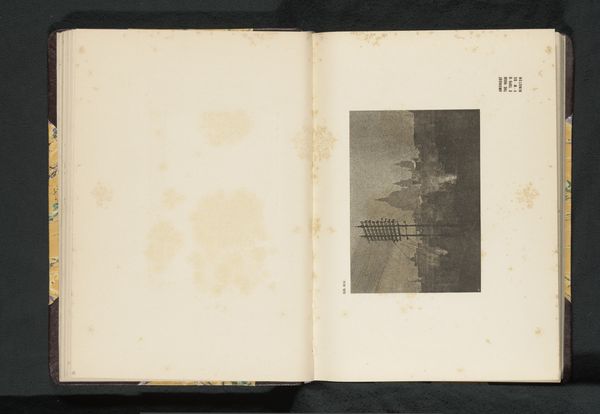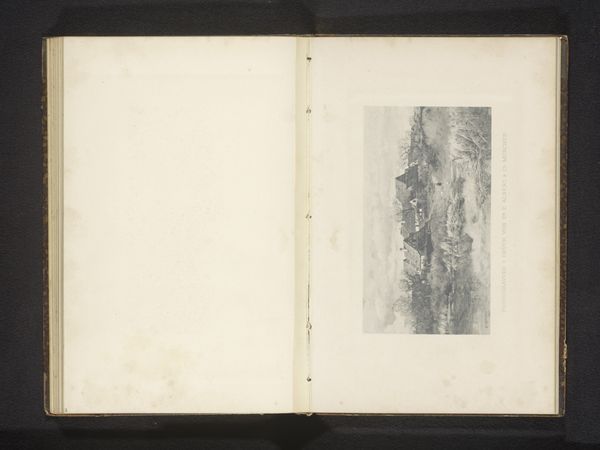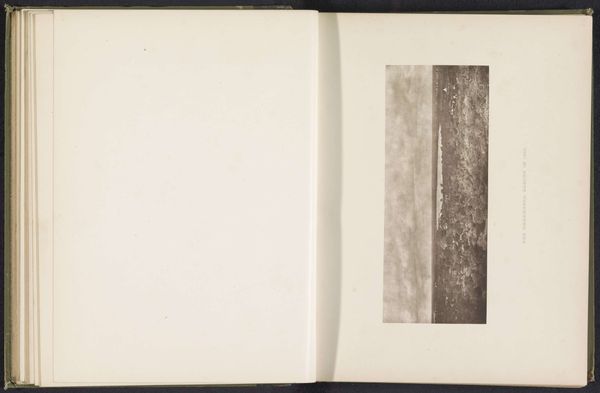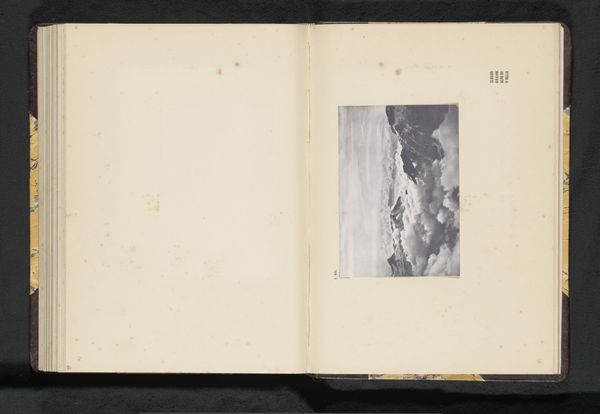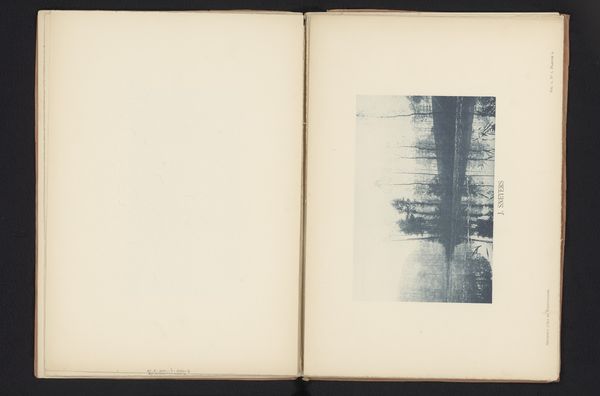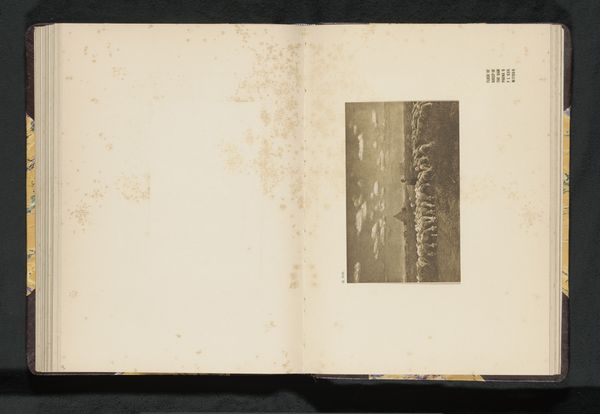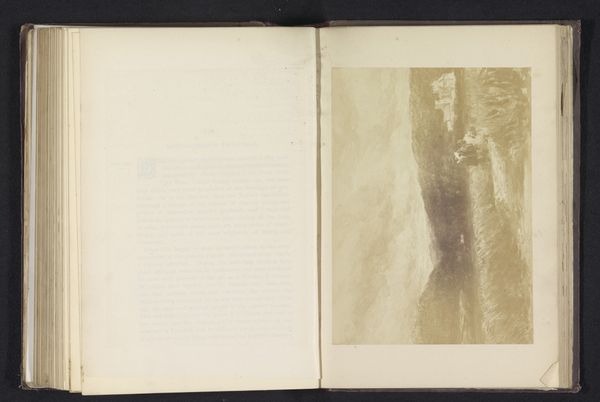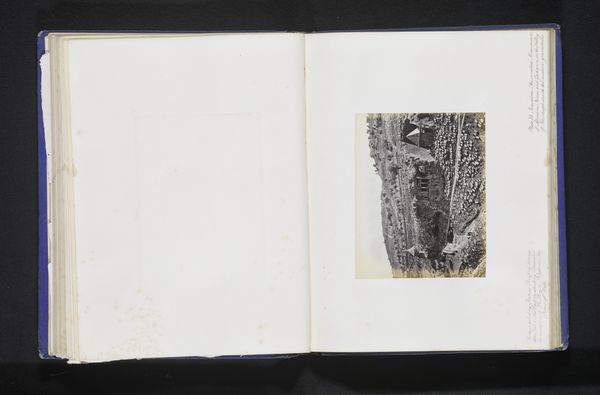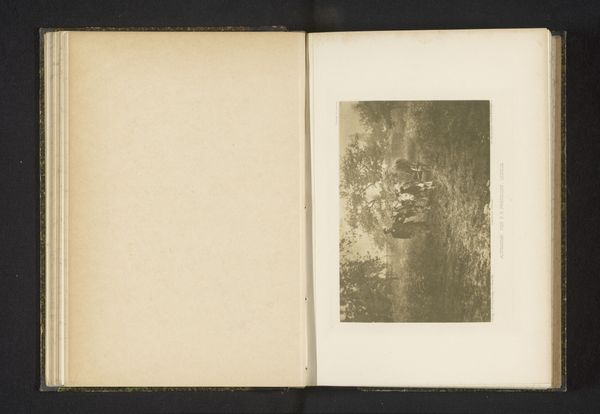
print, photography, gelatin-silver-print
# print
#
landscape
#
photography
#
gelatin-silver-print
Dimensions: height 111 mm, width 141 mm
Copyright: Rijks Museum: Open Domain
Editor: This gelatin silver print, a landscape called "Zeegezicht," was made by Francis James Mortimer sometime before 1905. It feels unfinished, juxtaposed as it is with an empty, unmarked space on the left page. I’m struck by the overwhelming power of the sea it portrays. What cultural or historical significance do you find embedded within this seemingly simple image? Curator: The turbulent sea, rendered in stark monochrome, speaks to the sublime – a romantic concept exploring the awe and terror of nature's immense power. This was a period where photography sought to be elevated to the level of “high art,” competing with painting and sculpture. Do you see how the artist evokes the symbolic weight of maritime history, human vulnerability, and perhaps, the colonial expansion of the era, often facilitated by naval prowess? Editor: I didn’t initially connect it to colonialism, but I see what you mean. The vastness of the sea, so central to both opportunity and peril, gains another layer of meaning when considered alongside that history. Is there something else about this specific choice of depicting a seascape which grants insight to social attitudes during this period? Curator: The "sea" became more than just a place to expand the nation, transport cargo or emigrants, or fight. This was also seen as the realm for imagination and exploration and therefore was the muse for creative outputs and artists could express and share experiences with the population. Does understanding this symbolism give new light and value to what might have otherwise seemed simply descriptive documentation? Editor: Absolutely. Understanding the various symbols embedded within it helps contextualize the work. Now it reads as a signifier of aspiration and romantic adventurism in this early period of artistic photography. Curator: Exactly, it deepens our experience beyond the merely visual. We start to see the artwork, and any artwork, as cultural memory solidified into symbolic form. Editor: It makes me consider what future viewers will project onto contemporary photography, too. It’s fascinating to consider the possible interpretations.
Comments
No comments
Be the first to comment and join the conversation on the ultimate creative platform.
